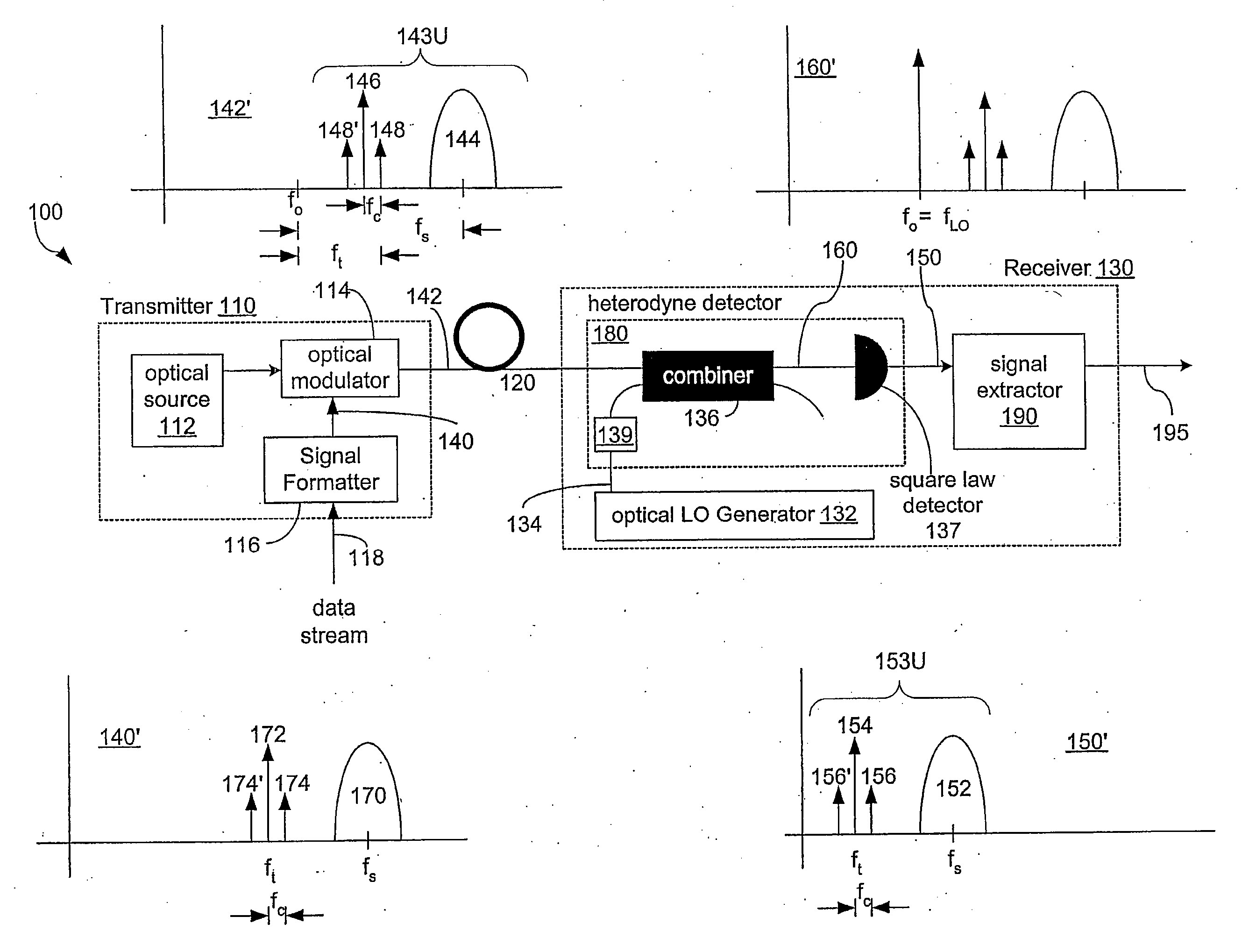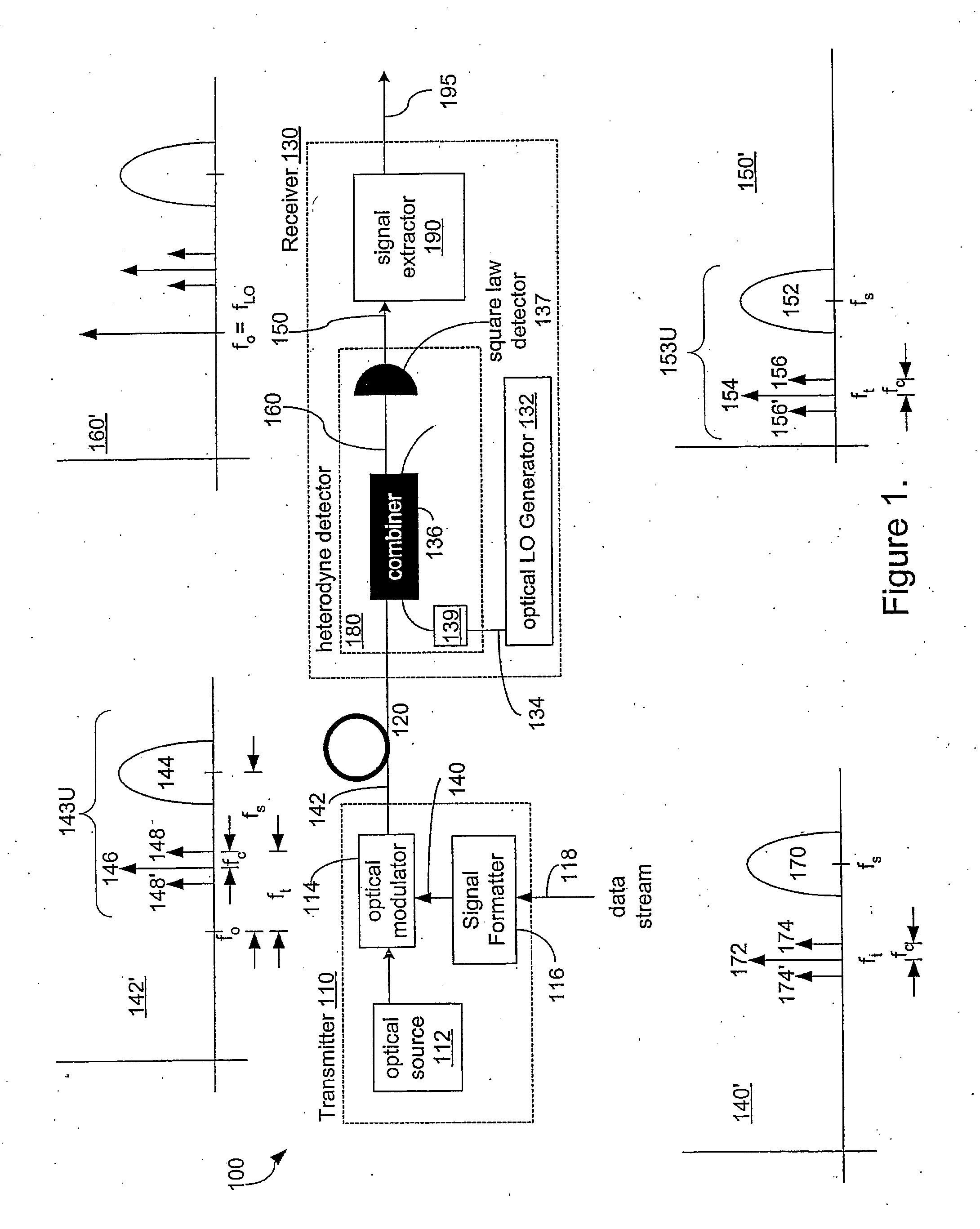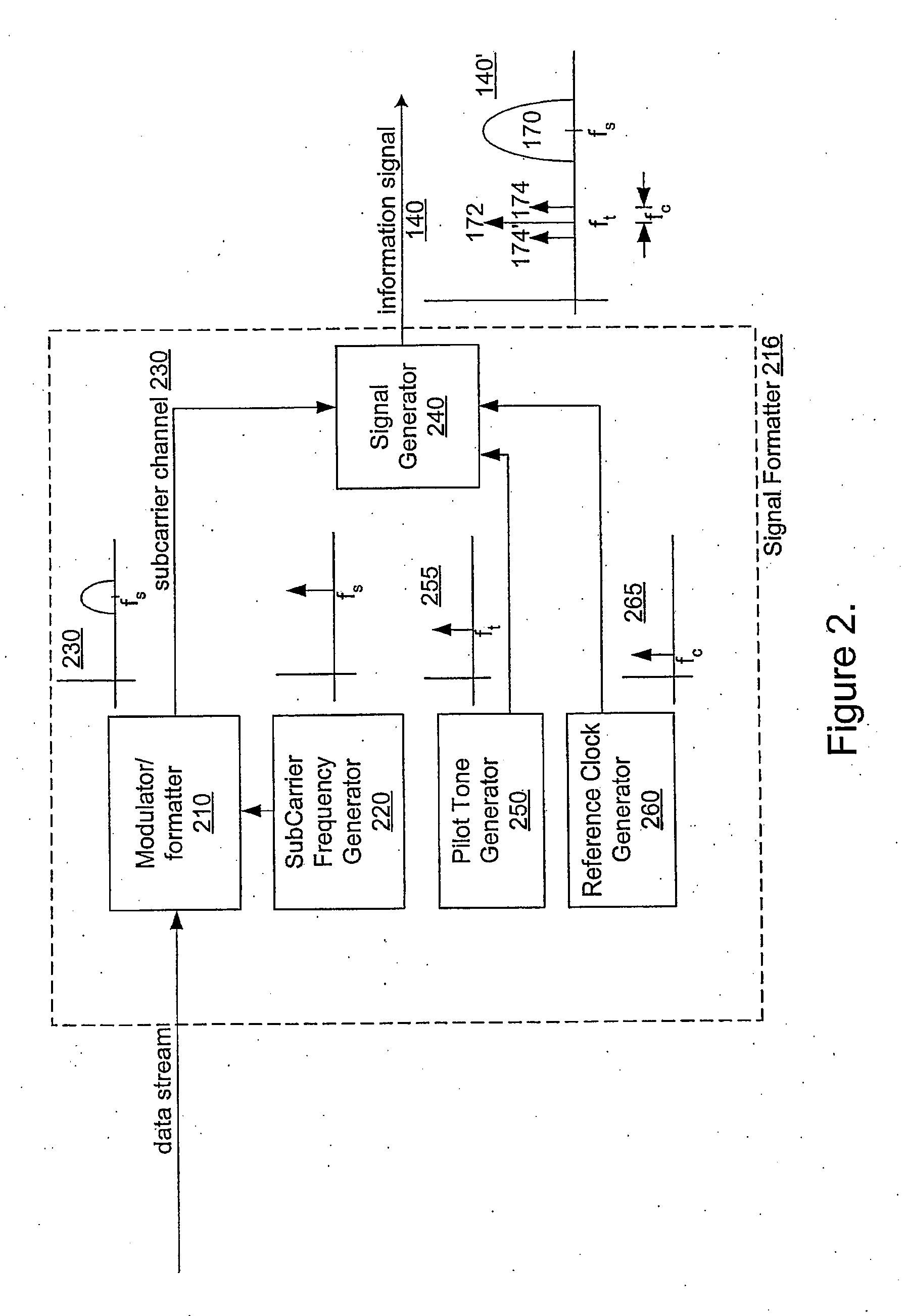Optical transceiver using heterodyne detection and a transmitted reference clock
a transceiver and heterodyne technology, applied in electromagnetic transceivers, transmission monitoring/testing/fault-measurement systems, transmission monitoring, etc., can solve the problems of phase stability lasers that are both bulky and expensive, and the transmission data error is further intensified. to achieve the effect of reducing the effect of phase nois
- Summary
- Abstract
- Description
- Claims
- Application Information
AI Technical Summary
Benefits of technology
Problems solved by technology
Method used
Image
Examples
embodiment 490
[0055]FIG. 4 is a block diagram of an embodiment 490 of signal extractor 190. Signal extractor 490 includes an information signal splitter 405, coupled to a local oscillator generator 450 and to a demodulator 460. Local oscillator generator 450 is also coupled to demodulator 460. In one embodiment, information signal splitter 405 includes an electrical signal splitter 410, a tone recovery arm 420, a reference clock recovery arm 430, and a data recovery arm 440. Electrical signal splitter 410 is configured to receive electrical signal 150 and is coupled to each recovery arm 420, 430, and 440. Tone recovery arm 420 and clock recovery arm 430 are both coupled to local oscillator generator 450. Data recovery arm 440 and local oscillator generator 450 each output to demodulator 460 which outputs recovered data stream 195.
[0056]Signal extractor 490 operates as follows. Electrical signal 150 is received from heterodyne detector 180 by electrical signal splitter 410. Electrical signal split...
embodiment 650
[0062]FIG. 6 is a block diagram of an embodiment 650 of local oscillator generator 450. Local oscillator generator 650 includes a frequency multiplier 610 coupled to a local oscillator combiner 620. In one embodiment, local oscillator combiner 620 includes signal multiplier 630 coupled to band pass filter 640.
[0063]Local oscillator generator 650 operates as follows. Frequency multiplier 610 receives reference clock signal 435 at frequency fC. Frequency multiplier 610 generates a multiplied clock 615 which is at a frequency which is a fractional multiple N of the frequency of the incoming reference clock 435. In other words the frequency of reference clock signal 435 is increased from fC to N·FC. In a preferred embodiment N is an integer factor. However, any reproducible factor can be chosen. Local oscillator combiner 620 combines pilot tone 425 and multiplied clock 615 to generate local oscillator 455 having the same phase noise and group delay as subcarrier channel 445. In a prefer...
PUM
 Login to View More
Login to View More Abstract
Description
Claims
Application Information
 Login to View More
Login to View More - R&D
- Intellectual Property
- Life Sciences
- Materials
- Tech Scout
- Unparalleled Data Quality
- Higher Quality Content
- 60% Fewer Hallucinations
Browse by: Latest US Patents, China's latest patents, Technical Efficacy Thesaurus, Application Domain, Technology Topic, Popular Technical Reports.
© 2025 PatSnap. All rights reserved.Legal|Privacy policy|Modern Slavery Act Transparency Statement|Sitemap|About US| Contact US: help@patsnap.com



